The Birthplace of the Rainbow.
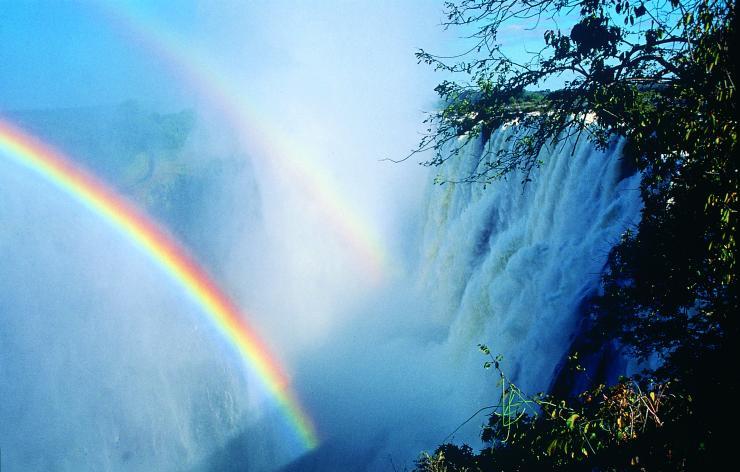
Victoria Falls is one of the best known and most spectacular sights in Africa. Its history is lost in the mists of time. We visited this majestic and mysterious birthplace of the rainbow
A 1,737- meter-long crack in the ground blocks the way to the Zambezi, which falls with an impressive drop of up to 107 meters. As it reaches the localities of Victoria Falls and Livingstone, the two border towns that mark the border between Zimbabwe and Zambia, the Zambezi, the fourth-longest river in Africa opens up to become almost two kilometres wide, embracing the entire extension of the falls. The grandiose flowing face of the falls is interrupted at two points by the natural watersheds of two large islands, Cataract Island and Livingstone Island, which are never submerged by water even during floods, as evidenced by the abundant deciduous vegetation covering them.
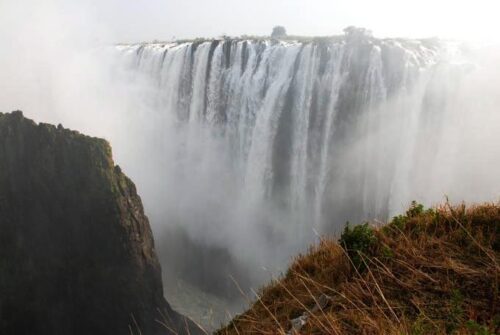
The face is almost entirely visible from the Zimbabwean side, along a scenic path that runs along the precipice and allows you to admire the four main sections of the falls. The first is Devil’s Cataract, which is the lowest at 74 meters high, and nevertheless impressive; it is in fact the only one that, on the Zimbabwe side, can be viewed from a central point thanks to a flight of steps that descend into the gorge.
After Cataract Island comes the highest and largest stretch, the Main Falls, perhaps the most spectacular and photographed section of Victoria Falls. Rainbow Falls follows, which takes its name from the singular phenomenon of the perennial rainbow (sometimes even two appear) that dominates the falls, originating from the refraction of sunlight in the droplets of nebulized water, a phenomenon to which the falls owe their ancient (and little-known) name of shungu na mutitima (or chongo na mutitima), which in the Tonga language means ‘the place of the rainbow’. Lastly, there is The Eastern Cataract, the only section visible from the front from Zambia.
Millions of years ago
The history of the falls was written by the river on the rocks. Millions of millions of years ago, an eruption formed a vast base of basalt rock between today’s Zimbabwe and Zambia, which takes the name of Batoka Plateau, having cracked at the current Victoria Falls. After the great Ice Age, the rise in temperatures and the consequent return of rains gave rise to innumerable watercourses on the African continent, one of which was the primitive Zambezi.
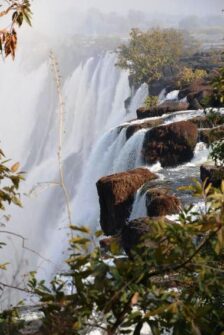
The very powerful winds following the thaw created formations of giant transversal dunes which, together with the lifting of the earth’s crust at the edges of the Kalahari-Zimbabwe fault, blocked the course of many rivers which, instead of continuing south, diverted some towards the Atlantic and others to the east.
The latter went to fill the vast depression of the Kalahari, forming that enormous prehistoric lake called Lake Magkadigkadi (whose remains are still seen in Botswana in the great saline area of Sowa and the Magkadigkadi Pan), which until 20,000 years ago occupied a large part of Southern Africa. The rivers, however, carried a large amount of sediment, which raised the bottom of the lake until it dried up about 10,000 years ago.
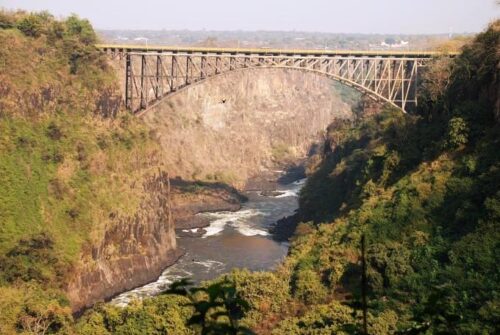
The Zambezi began to flow on the same sedimentary rocks that had decreed the death of the lake and at the same time filled the fracture in the basalt. It gradually eroded the rocks, finding its way to the ocean along the slight natural depression that had followed the fracture of the plateau. Here, due to the abrupt change of direction of the water, erosion became more intense, and in the following epochs, the soft sedimentary rock was carried away up to the deepest and hardest basalt, a hundred meters deeper. The different colours of the sedimentary layers eroded by the water are clearly visible from many viewpoints overlooking the gorges.
Discovery by explorers
Compared to this story, the fact that David Livingstone was, in November 1855, the first European to discover the falls seems an insignificant detail. But it was probably thanks to him that today we know them for what they are. They had already been reported in 1715 on a map by the cartographer Nicolas de Fer (the result of the stories of local populations).However, the first European eyewitness account was that of Livingstone, led by the Makalolo (inhabitants of the region at the time) to what they called Mosi oa tunya (‘The smoke that thunders’). “Nothing in England can match such a spectacle of such beauty and majesty that it seems reserved for angels”, noted the explorer, who named the falls in honour of the sovereign of England.
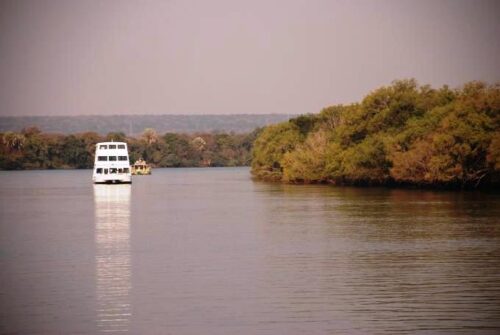
The story of the falls will continue with Cecil John Rhodes, an entrepreneur and politician in her Majesty’s colonies, and his dream of uniting all British possessions through a single railway. The project led to the erection of the iron bridge over the Zambezi in 1905, an extraordinary engineering work that, more than a hundred years after its inauguration, still fulfils the task of ensuring transit between Zimbabwe and Zambia at a strategic point. A 2005 appraisal established that with simple maintenance works the bridge could last another hundred years.
The volume of the river varies considerably during the year, due to the alternation of dry seasons (generally from May to October) and the rainy season (November-April). It is completely normal that at the end of the dry season the rivers reach the minimum flow and consequently also the waterfalls originating from them. The hydrometric levels of the river have certified a record level of flooding in the river in recent months, which had not been recorded for over forty years.
Gianni Bauce/Africa



